During the development of the last two games in the Ganbare Goemon series, Ganbare Goemon: Tokaidouchu Oedo Tengurigaeshi no Maki for the Nintendo DS, and the compilation port GBA Kessakusen! Ganbare Goemon 1•2 Yukihime to McGuinness, the Goemon Production Team seemingly took it upon themselves to make a website for the Ganbare Goemon series, with a lot of trivia about the games, (past, present, and future) links to merchandise or events, computer desktop trinkets, and some information about the series.
One of the most significant items to come out from this was a series of interviews/reminisces done by long-time Goemon designer and producer Madoka Yamauchi and series producer Etsunobu Ebisu. Although they don’t go too much in-depth into the games, and they chose only six games for the web series, each interview provides a wealth of information.
The interviews were saved thanks to the Internet Archive and brought to my attention by Ark Hounder on Twitter (who has done his own translations). I have translated all of them myself as well, and will be presenting them on the blog with every game featured. Here is my translation of the third game in the Ganbare Goemon series they covered, Ganbare Goemon 3 Shishi Jurokubee no Karakuri Manjigatame:
Goemon Materials Museum Part 3
The third game in the Goemon series for the Super Famicom. In Part 3, we take a look at Ganbare Goemon 3, “The Mecha Leg-Hold of Jurokube Shishi.”
Ganbare Goemon 3: The Mecha Leg-Hold of Jurokubee Shishi
The third Goemon game released on the Super Famicom. The title is an ambitious game, with adventure elements featuring strongly in the story, and a time frame covering the Edo period and the distant future. The game is also chock-full of new elements such as the Karakuri Walkers and the electrifying Goemon Impact stages.
For Super Famicom Ganbare Goemon 3: The Mecha Leg Hold of Jurokubee Shishi Release Date: December 16, 1994
We brought together Yamauchi and the general producer of the Goemon series and model for the Ebisumaru character, Ebisu-san, and we asked them to recall their thoughts about the production of Ganbare Goemon 3, “The Mecha Leg Hold of Jurokube Shishi.”
Yamauchi: This time we are looking at Ganbare Goemon 3 ~ The Mecha Leg-Hold of Jurokubee Shishi.
Ebisu: Goemon 3, huh. The development of that game was really tough.
Yamauchi: Absolutely. The last phase was hell.
Ebisu: We’d gotten comments like Goemon 2 [Ganbare Goemon 2 Kiteretsu Shogun McGuinness] was lacking in content, so we decided to make a game that gave people more gameplay time by deepening the adventure aspects of the game. But no matter how long we worked on it, the end was never in sight.
Yamauchi: That design document was so incredibly thick. Without noticing, suddenly someone would add more features to it.
Ebisu: Wasn’t it you guys who made it that thick to begin with? When the design document was put on my desk, the whole thing was stacked higher than my computer monitor! I was terrified when I saw that.
Yamauchi: During the development, you got so angry with me when I went to ask you for help about something, right? Your eyes, glazed with anger… You were terrifying. From that incident onwards, I wrote all the messages to you on paper and put them on your desk.
Ebisu: Just… No, I don’t want to see that kind of tower of paper ever again.
Yamauchi: But Ebisu-san, we went through those features in the document with terrifying speed, didn’t we? It’s as if the gods came down to us right there and then.
Ebisu: There was this guy who wouldn’t leave me alone until I worked on the features for the game, and I was yelled at even if I went out to eat! “If you have enough time to eat, use it to put something in the code!” That, and all the feature rejections… to this day, I can list off my list of grudges [from that time] if you ask me.
Yamauchi: Yeah, but, now it’s water under the bridge, right? Despite it being a really tough time, now it’s become a good memory.
Ebisu: Yeah, you’re right. It was well and truly a test of wills, but it was a project where I fought until the very end, and now I have a strong emotional attachment to the game.
Yamauchi: Yeah, in many ways it was an unforgettable project. About two weeks before the end of production, we still hadn’t decided on how the “Manji-gatame” mecha leg-hold was going to work, and our daily schedule became chaotic.
Ebisu: Speaking of which, for all we call it the Production Materials Museum, there aren’t a lot of materials to speak of.
Yamauchi: I will extract some stuff from what I have that we haven’t made public.
Ebisu: You’re a real hoarder! Nice job.
Production Materials
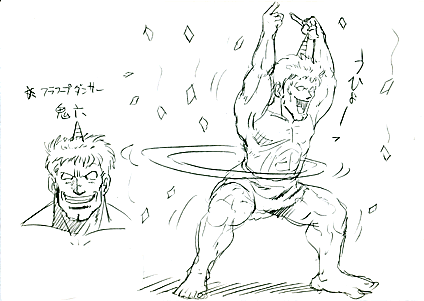
Oniroku A hula hoop dancer. He is a Japanese-style oni demon dancer with a cheerful disposition who appears in the Game Over screen. He continues to appear regularly in secret throughout the Goemon series.
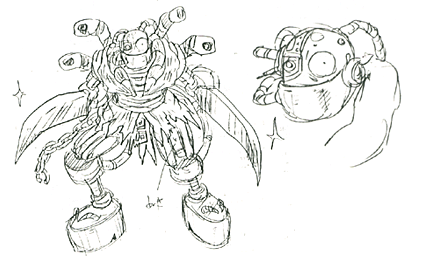
Kabuki Forever His third appearance in the series since his debut in Yukihime Kyushutsu Emaki. [Legend of the Mystical Ninja, the first Ganbare Goemon game for the Super Famicom.] He has been remodeled so many times and now looks like this.
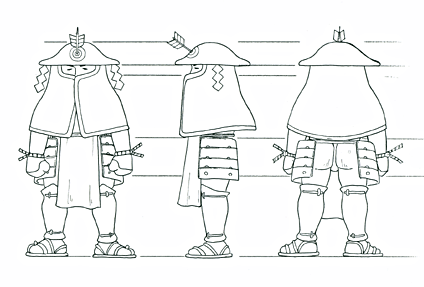
The Five Omikuji Brothers In the game, they always face the front so you can’t tell, but in fact, the thing hanging down in front of them is a fundoshi. When they turn their backs, their buttocks are fully exposed.
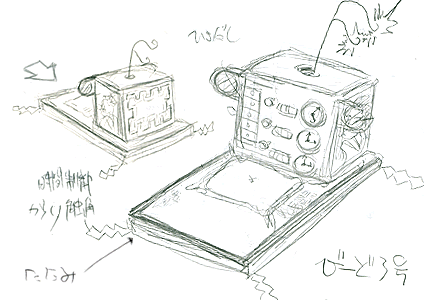
Model Vi-Dro A time machine created by the Wise Old Man. It only appears in the opening cutscene, but the specification has been designed with a lot of detail.
[Translator’s note: the Japanese term is “bīdoro,” a borrowed word derived from the word for glass in Spanish (“vidrio”) or Portuguese (“vidro”). The term was mostly used to refer to pane glass or objects made of glass, such as glasses or a popular toy that made a characteristic sound. Eventually, the term even stretched to refer to beautiful women, who would often be depicted using the toy. This latter meaning is probably what the Wise Old Man had in mind when he named the time machine in this way.]
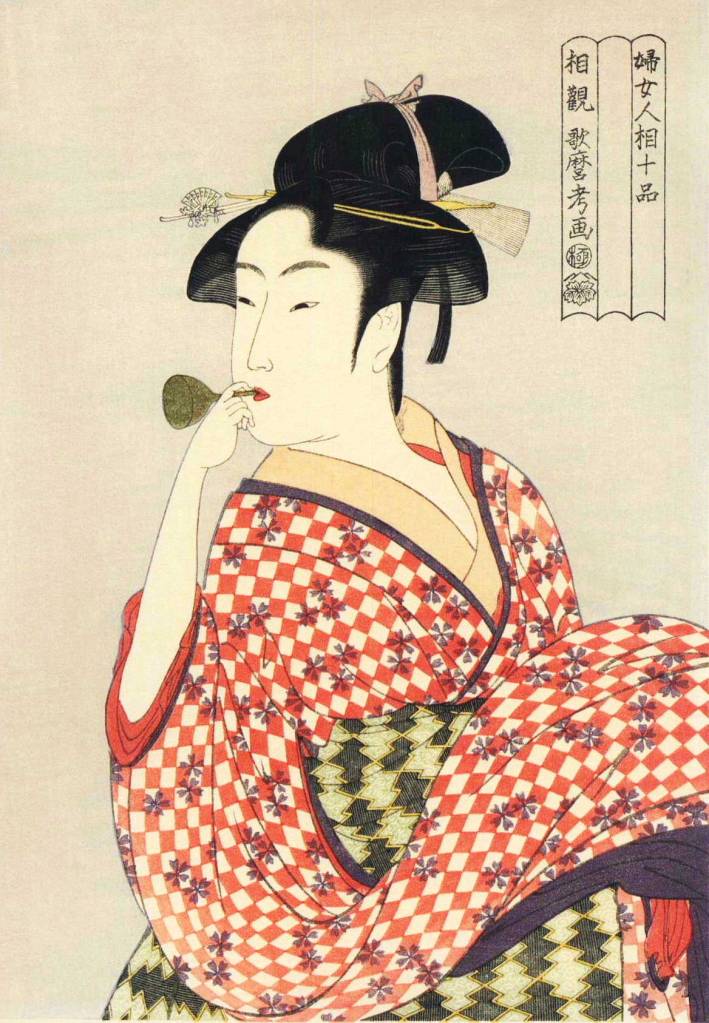
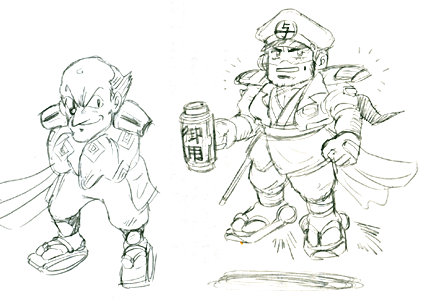
Townspeople in the Future There were designs for more [characters] in the design document, but please take a look at the following for now: a police officer and a pickpocket…
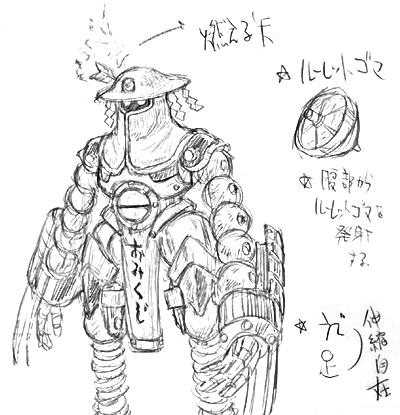
The Lottery King The origin of the name comes from Konami’s lottery machine, “Lottery King” (Chusenoh). A very hard enemy to design due to its large variety of attacks.
[Translator’s note: the Chusenoh was a lottery-gambling machine produced by Konami in 1992. Customers connected the small machine with 4 color buttons and a number pad to a television, and bet on bingo, rock-paper-scissors, lottery, tamatebako (a unique kind of lottery), raffle drum, mini-golf, fishing, and slot machine minigames. The variety of attacks might be a reference to the different kinds of these minigames. More details here.)
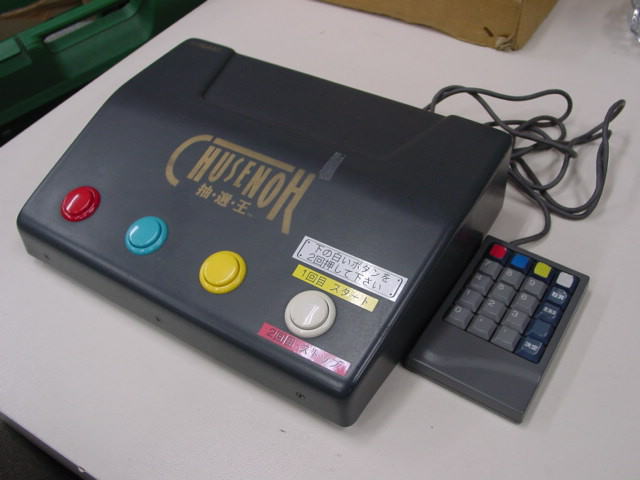
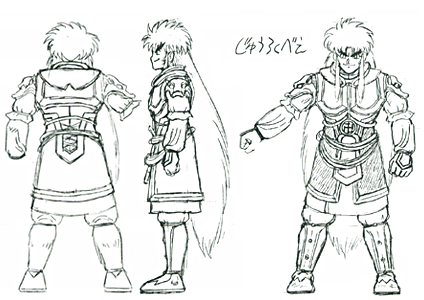
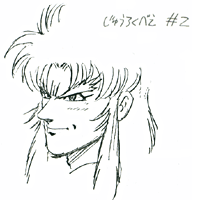
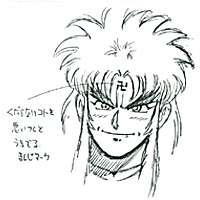
Shishi Jurokubee A design drawing of [main enemy of the game] Shishi Jurokubee. The manji symbol appears when he thinks of something stupid…. This design detail never made it into the game.
[Original content copyright ©Konami. My translation.] Source.
